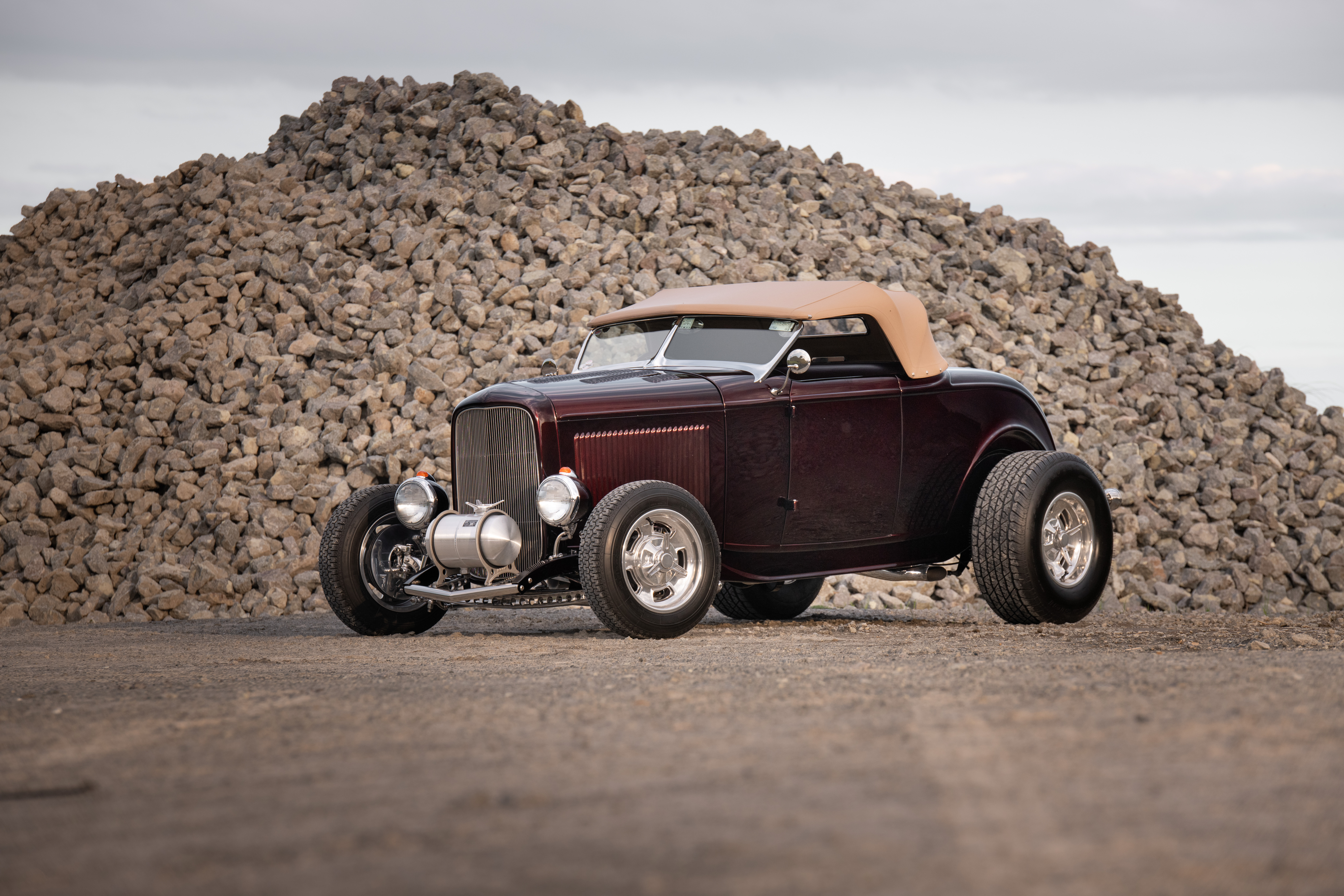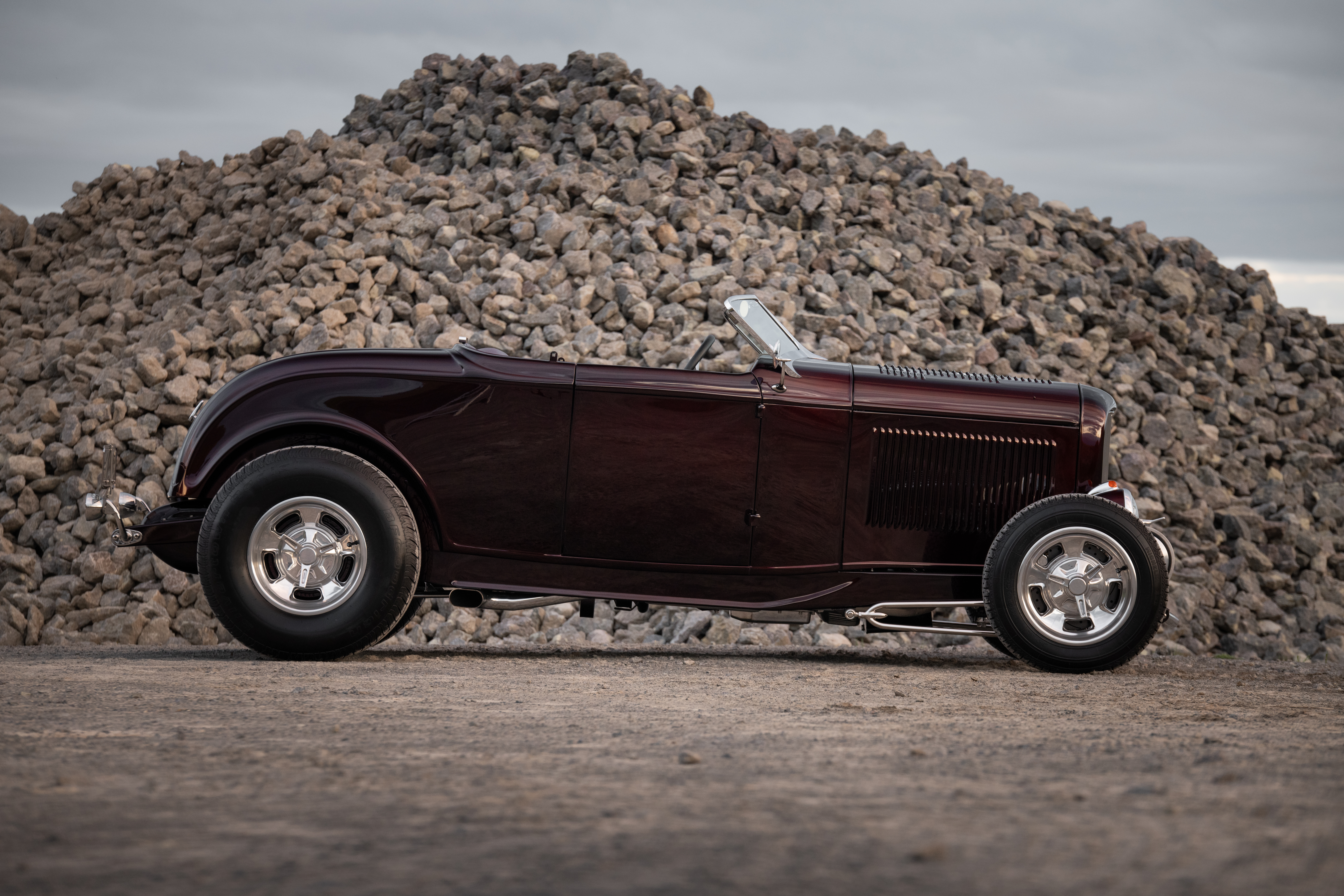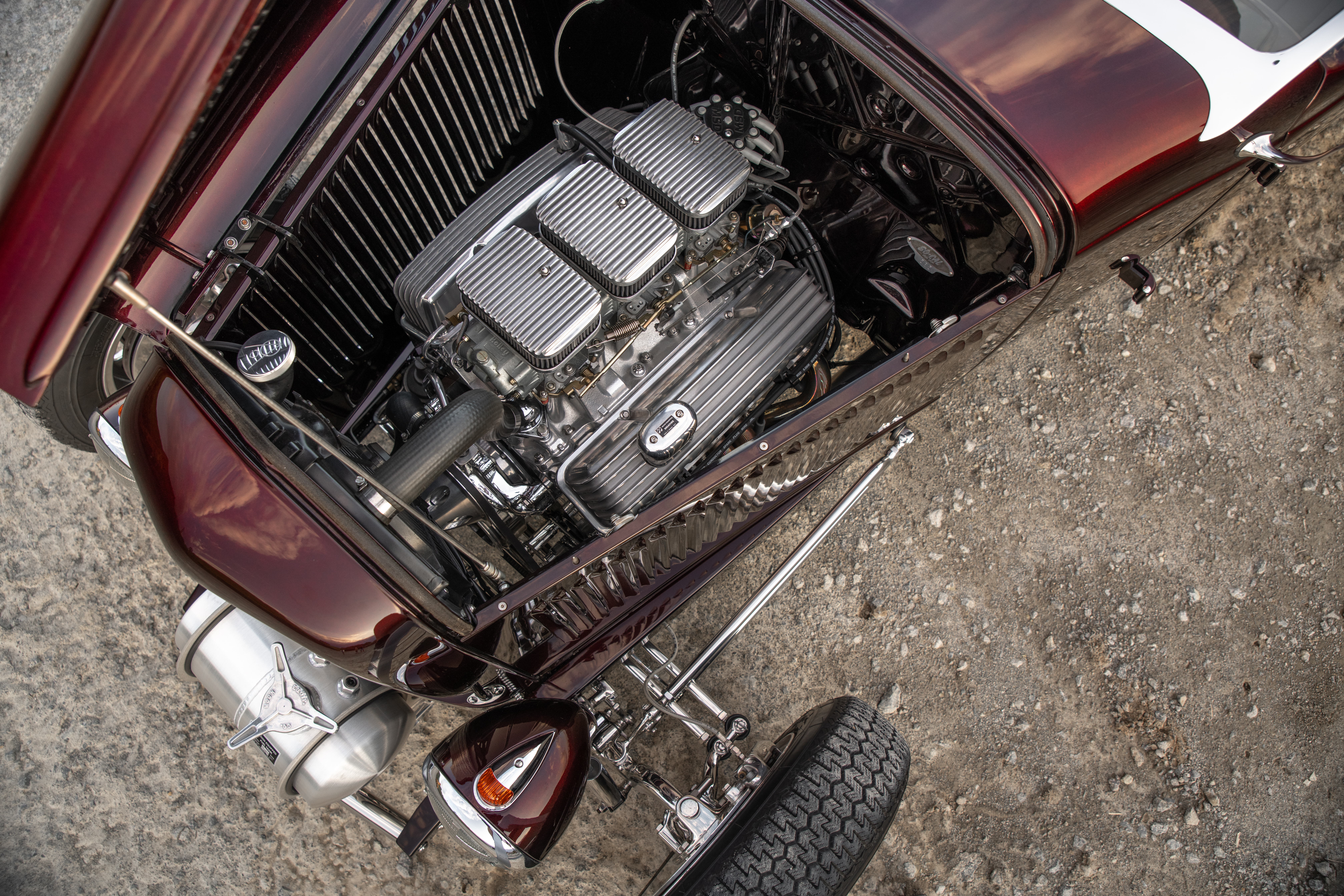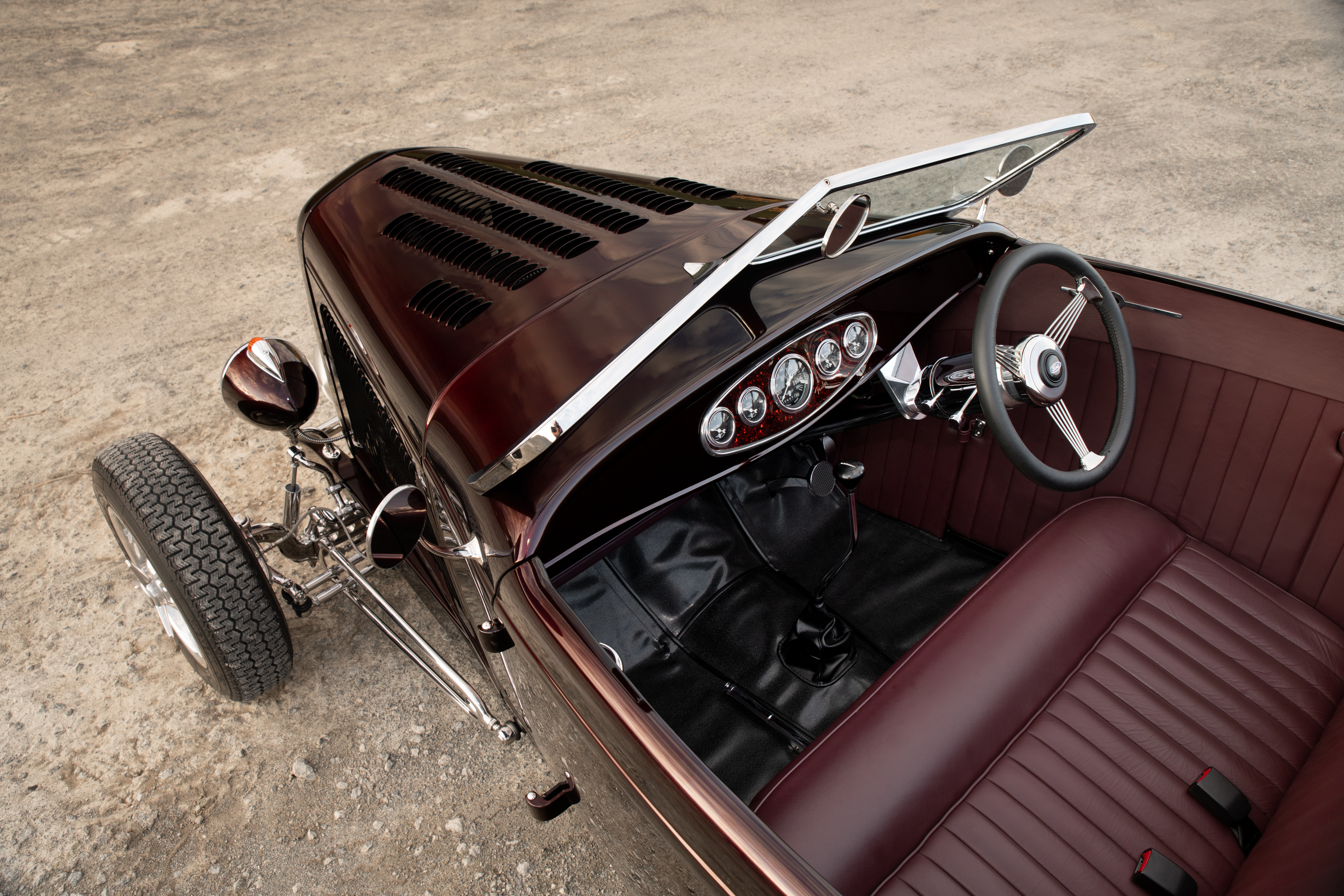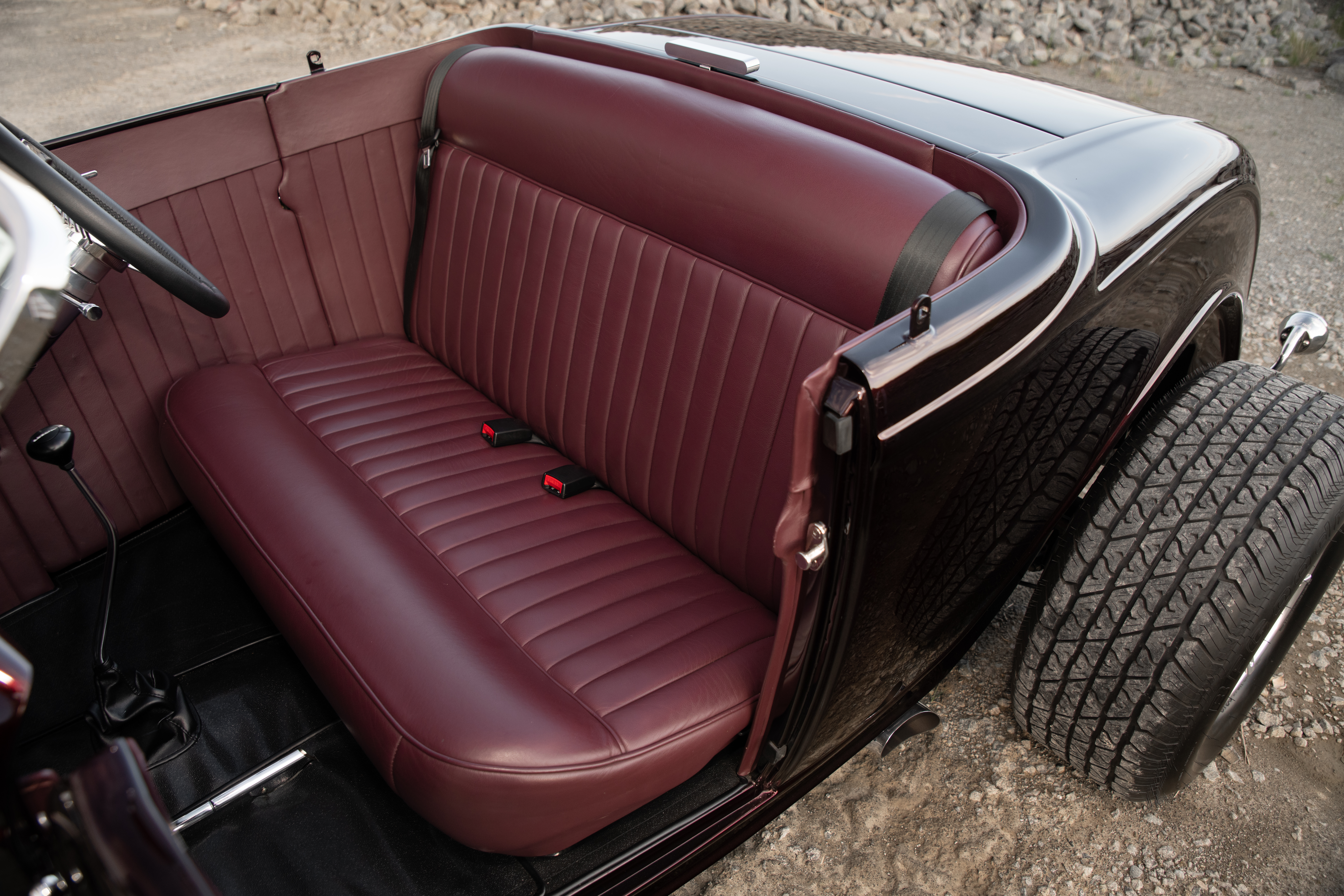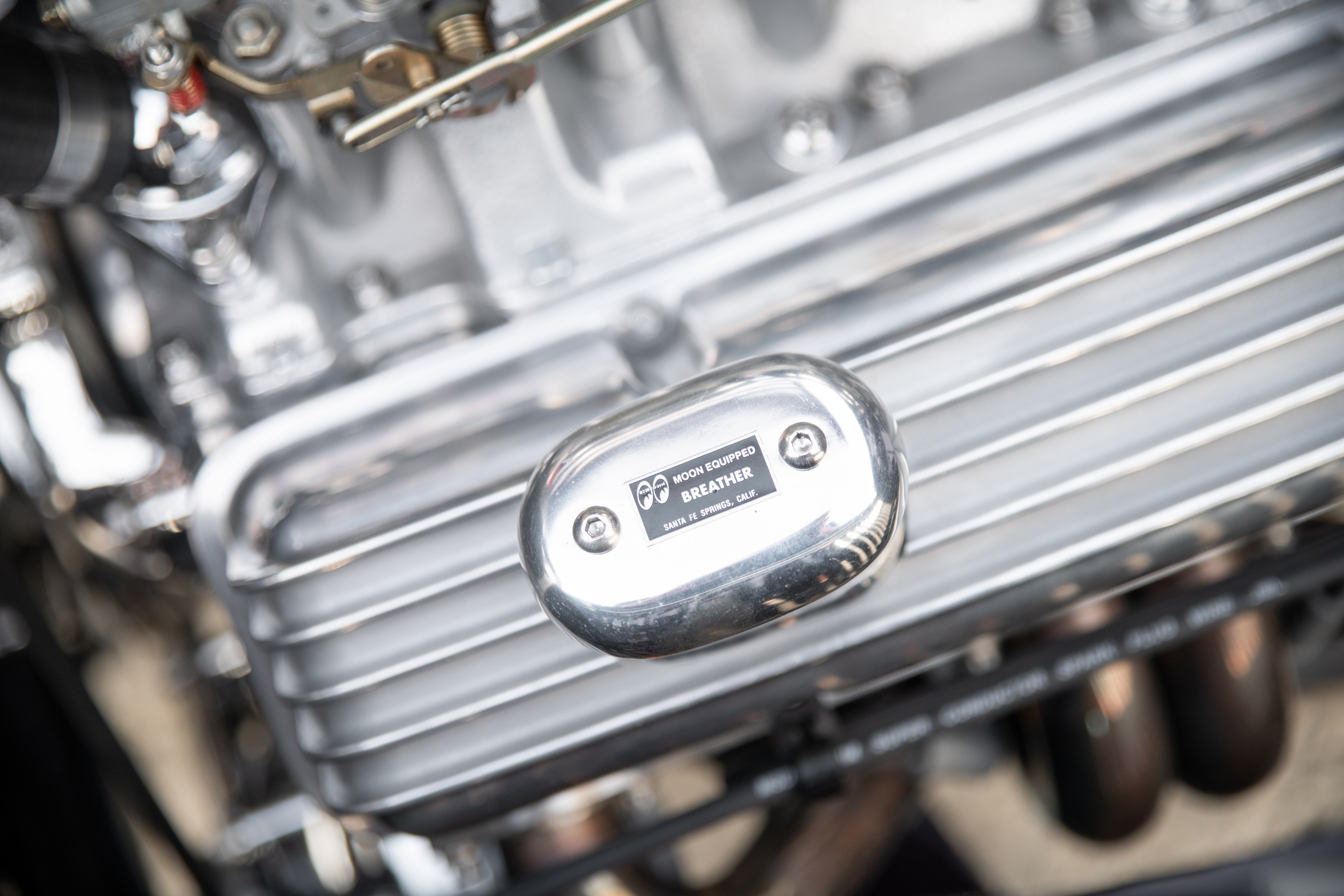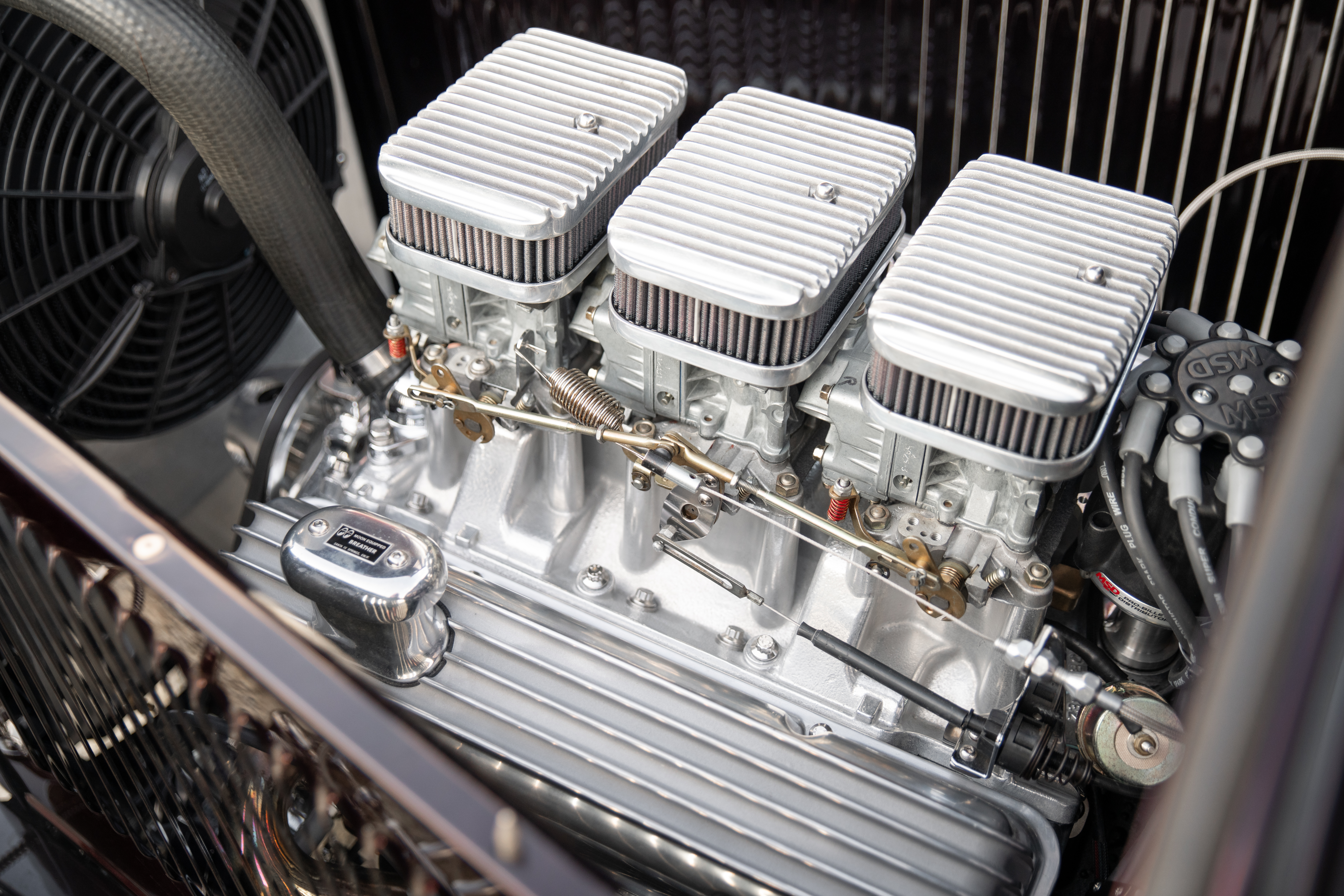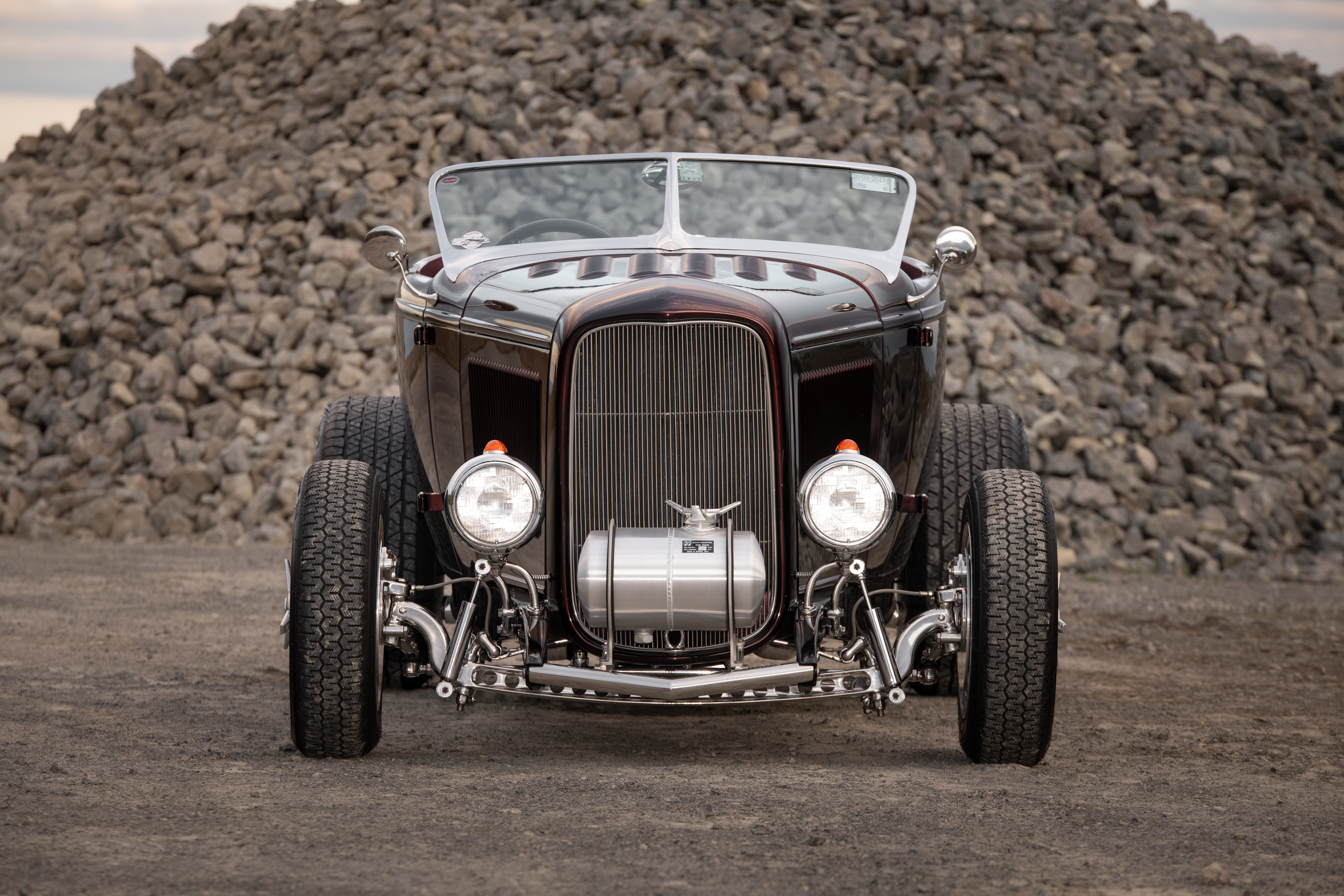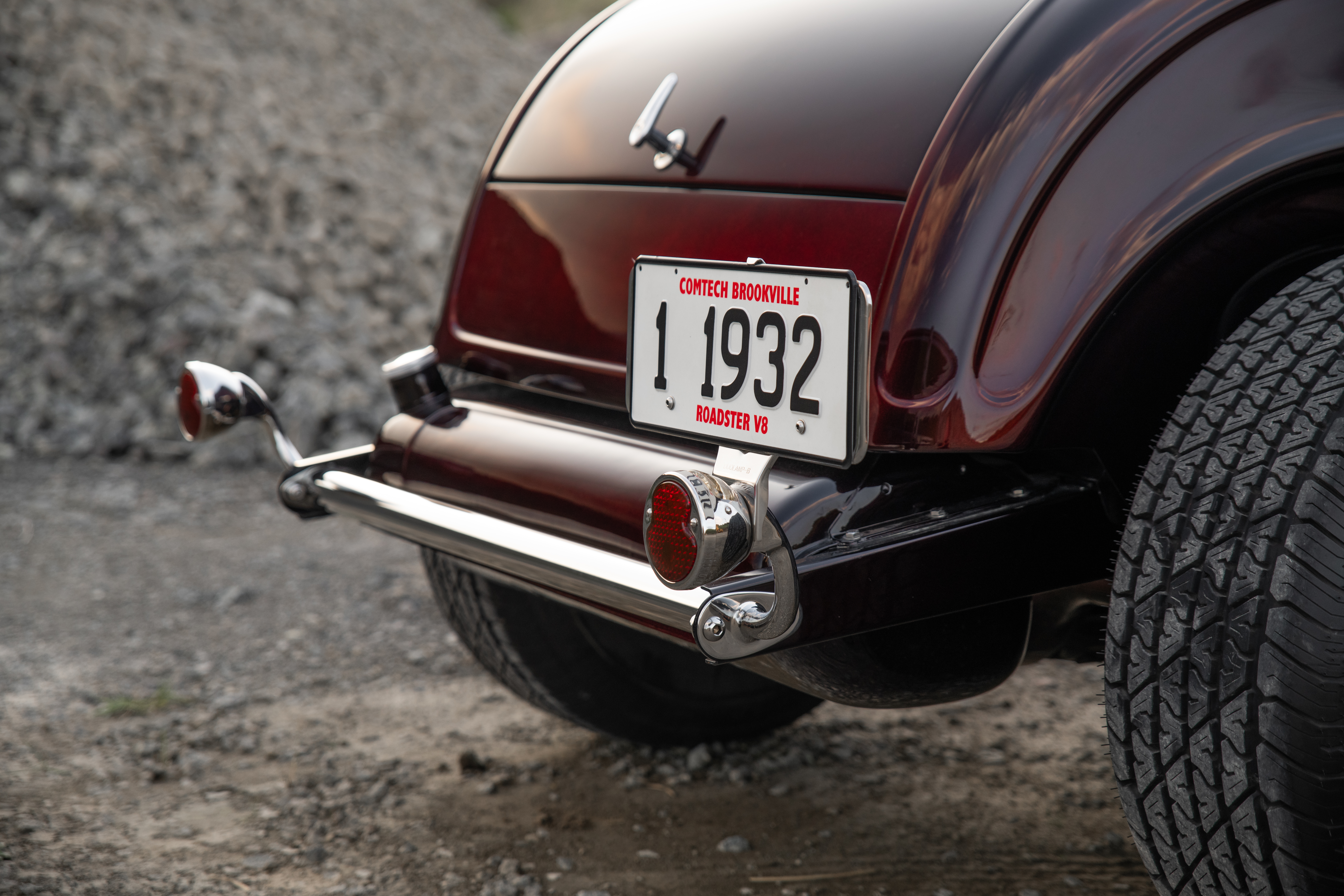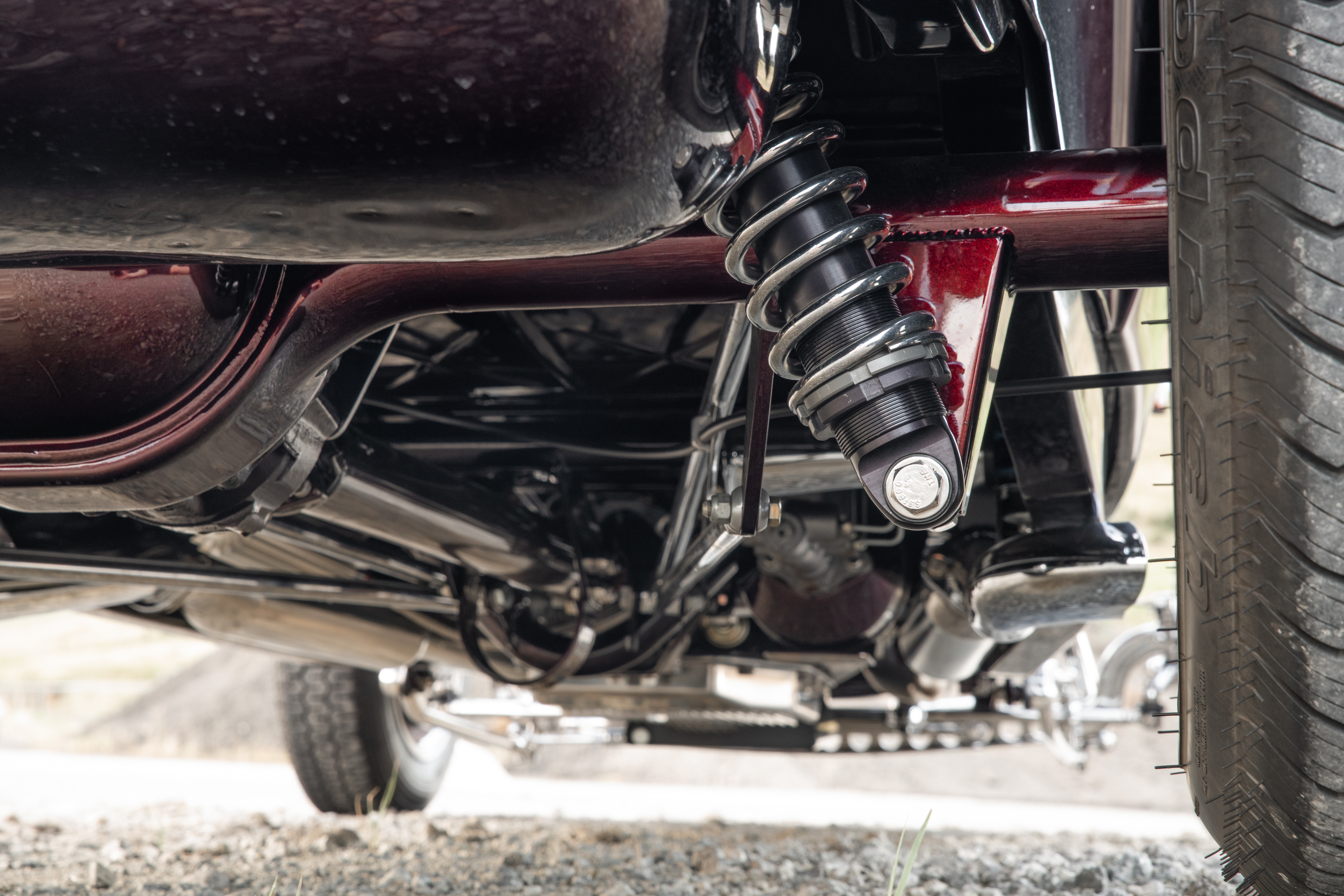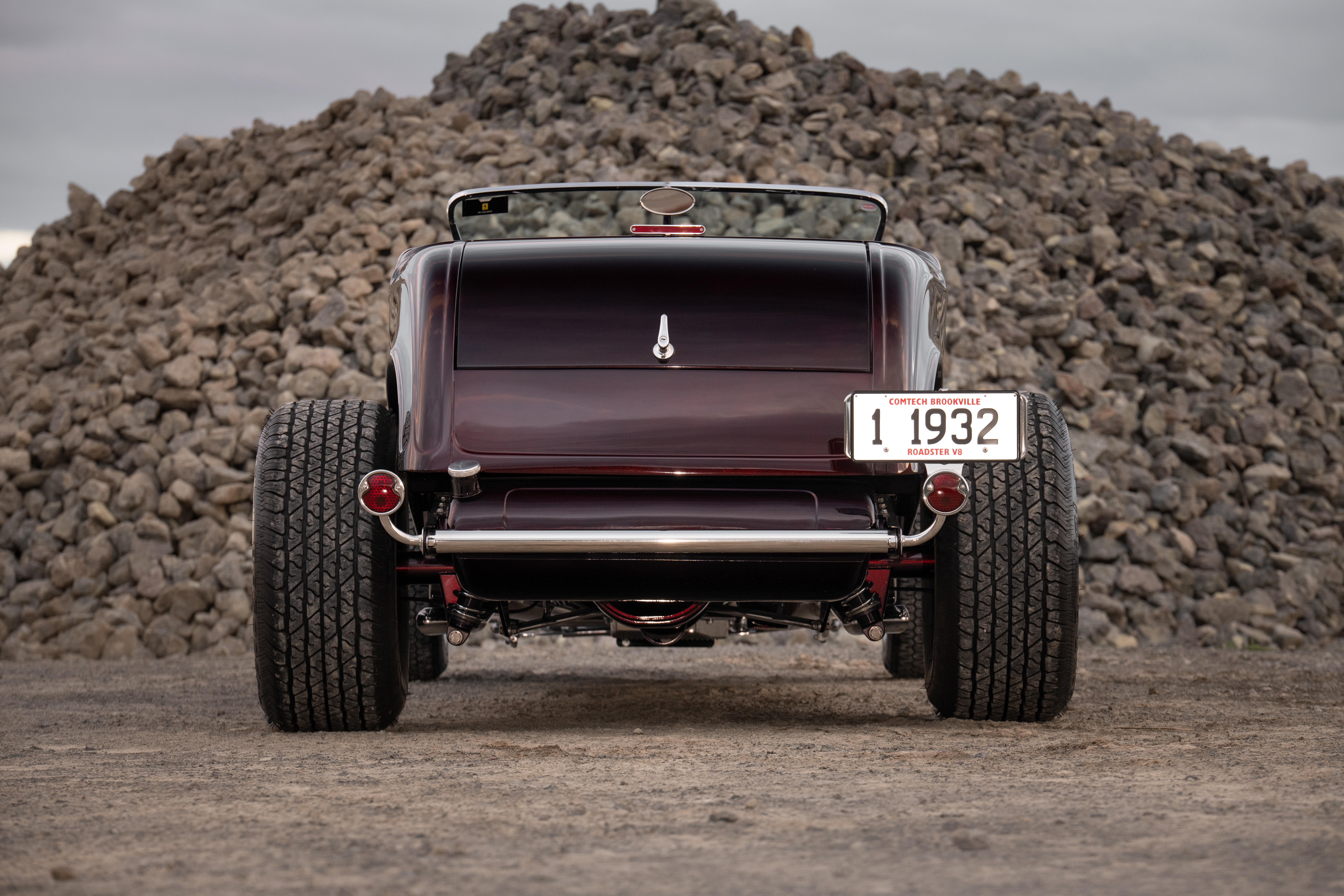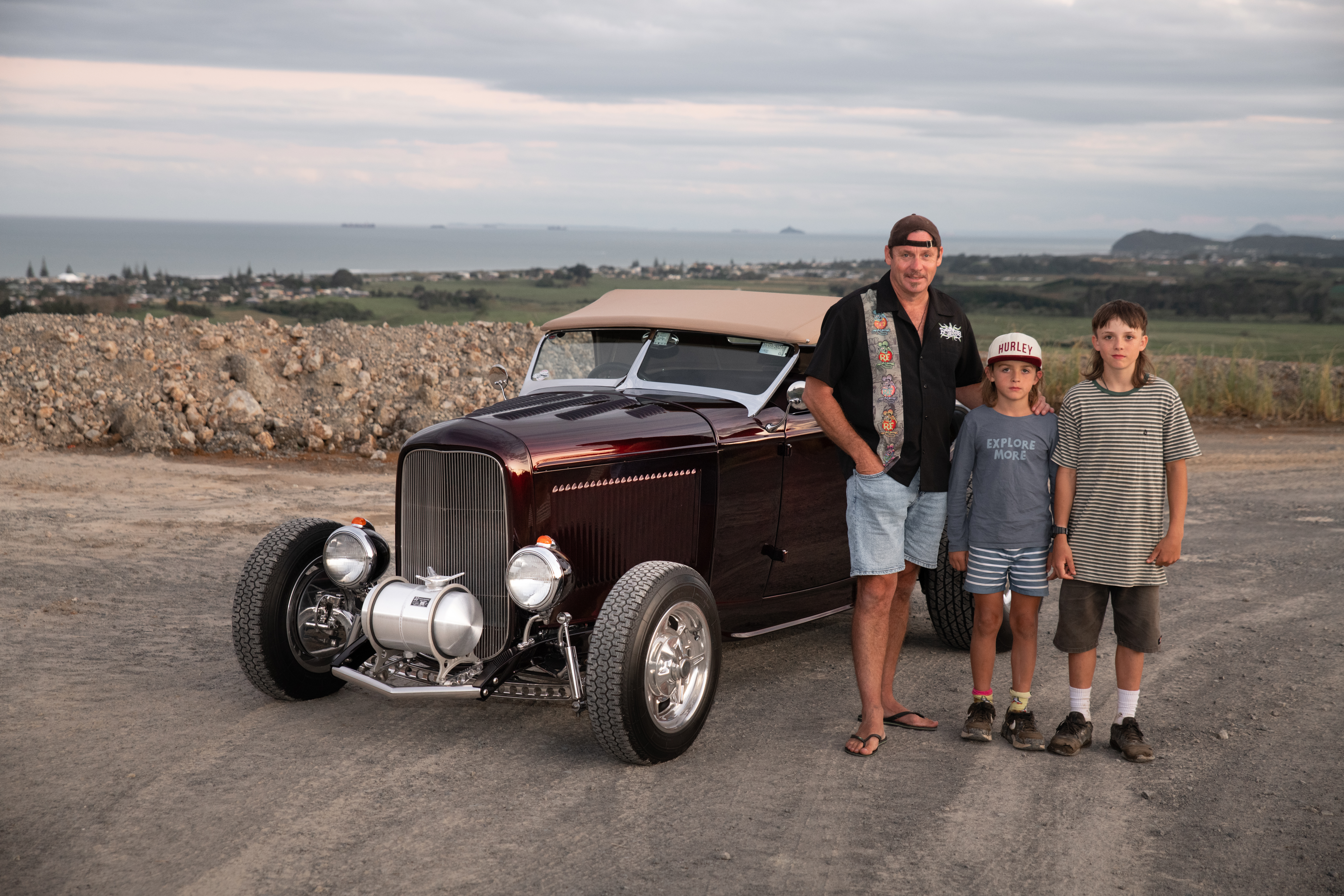Words: Todd Wylie Photos: Liam Dijk
The golden sand of Waihi Beach may be a long way from the Southern California roots of hot rodding, but that isn’t stopping Jamie Waugh from terrorising the streets in a retro-inspired ’32. Jamie is a man with good taste when it comes to cars, as we saw recently with his mega-powered Chev Nova, and the ’32 is not so different. The car’s retro look belies the more modern engineering that sits within and the overpowered small block up front.
Jamie’s normally the type of guy to build his own cars from the ground up, and although he has both the means and the ability to do so, when he stumbled upon an already completed ’32 roadster sitting in storage, he knew he had to have it. The car was built for customer John Anderson by serial hot rod builder Colin Willoughby and not long after its completion had been pushed aside while John moved onto other things.
Although it was for sale — kind of — the seller also didn’t really want to let it go. Jamie’s not exactly the type of guy to take no for an answer though, so eventually a deal was done. The driving force was that the car was built almost exactly as Jamie would have done himself, all it really needed was a few personal touches and a whole lot more ponies under the hood.
Having built countless high-end cars before, Colin knew what was needed to build the car right, and that included starting with a numbered SoCal chassis assembled and boxed by the legendary Robin Silk himself. From this solid foundation, the rest was fairly standard issue for a high-end ’32 build. That includes a drilled I-beam hung off polished hairpins being added up front along with polished steering arms and polished shocks.
The body of the car wasn’t a fibreglass item, for if it was, Jamie would never have considered purchasing it, as his love is for steel-bodied cars. Instead, the body is a Brookville steel reproduction item that Colin added additional strength to. The Brookville items are known to be good quality, but that didn’t stop some small fit-and-finish tweaks from taking place to ensure it was perfect. The louvered hood sides aren’t a Brookville item, but custom-made here in NZ — an impressive piece of work. They pale in comparison to the hood itself though, which has seen countless louvers punched into the curved steel panel, each one perfectly finished and positioned.
While there are many different looks ‘32s can take — which no doubt helped their popularity — Jamie always had a firm view in mind of the particular style he liked. That included a sloped Duvall windscreen along with a Moon tank hanging off the front, the latter of which was one of Jamie’s first additions. The key item that helps set the look of the car though is the wheel and tyre choice, and in this case, it’s a fairly typical highboy-style set of bigs and littles, albeit a bit more boutique than most. The front set of genuine Halibrand wheels measure in at 15×6 inches and are wrapped in 165/70R15 rubber while the rear wheels come in at 15×10 and wear 285/70R15 BF Goodrich Silvertown rubber.
When Jamie test drove the car, his young son, who is equally as horsepower crazed as Jamie is, commented on how boring it was, and that it didn’t really seem like a hot rod. Of course, that was something that Jamie agreed with, but knew how to fix. Although before he laid a spanner on the car he spent two full days going over it all and coming up with a solid game plan.
Knowing Reece Fish from FFR Engine’s reputation, the two got chatting on how to fix the engine situation. Of course for a guy who builds top fuel motors for sport, runs the quickest street car in the country, and builds motors for countless drag cars, a simple hot rod motor is a walk in the park. The basis for the build would be the new 4-bolt 350 Chev block that the car was purchased with, but filled with a Scat forged crank, 6-inch H-beam rods, and Wiseco Pro Tru Street pistons.
This combo took the capacity out to 383ci but it’s the rest of the components that help to extract more mumbo. Reece had a custom camshaft ground that not only had the desired amount of lift but also converted the firing order to that of an LS engine. That helps to explain the distinctive sound that emanates through the custom headers and side exit exhaust. But, despite the modern twist, the aim for the engine build — and the car in general — was to keep it looking more correct for its time period. A port matched triple carb mid rise Edelbrock intake manifold was the perfect component for this and, topped with 350cfm carbs on each end and a 325ci item in the centre, it aids performance too.
Although many like their MSD ignition components to stand out in bright red, that was never going to cut it for the more refined look that Jamie was after. Instead the black parts used blend in seamlessly. In contrast, the finned valve covers and air filter covers get all the attention in the minimalist engine bay.
Reece promised around 500hp and he delivered, with the end result producing 480hp, which is plenty in a car that weighs in at just 1250kg. Understandably Jamie can’t speak highly enough about Reece’s involvement; both for how good the engine is and how great he was to work with.
In terms of driveline, as the car was neither going to be raced, nor was it what you’d describe as heavy, the Chuck Mann-built TH350 trans was deemed up to the task, although it did receive a Pro Torque billet 3200rpm stall converter. The original builder had thankfully sorted out a rear end that consisted of a Currie 9-inch housing with LSD centre and 31-spline axles, so all Jamie needed to do was to have Tim at The Krysler Shop fit a better gear set.
The interior of the car is award worthy on its own, being somehow simplistic, as a hot rod should be, but detailed at the same time. Jamie wanted a car that lived up to his expectations of a hot rod — that meant a bench seat and simple period components, yet somehow the result is much more than the sum of its parts. This is likely thanks in part to the unique choice of the Italian Shiraz leather that has been chosen along with the attention to detail.
The crowning glory of the interior has to be the custom dash gauge surround made by Fender Guitars. Filled with Stewart-Warner gauges and etched with the Fender name, the surround is the perfect centerpiece, literally. What you don’t see in the interior is the hidden audio system, although with how good the car sounds, it’s not a system that actually gets any use.
The paintwork on the car was taken care of by Julie at Counties Auto Painters, and is a three-stage cherry black paint that changes colour dramatically depending on how much light is hitting it. For those days when the sun is too much on the head, a Sid Chavers soft-top can be attached, although most of the time Jamie’s happy to keep the car as it was intended, no roof and wind in his hair.
Jamie’s vision for the car stayed true, from before he pried it from John’s hands until he had transformed it to how you see it today. While he gives full credit to Colin and John for the original build, his countless own touches, which also include significant suspension component upgrades, see it performing as it should.
Although it’s now cruising the not-so-mean streets of Waihi Beach, the build wouldn’t look out of place in the hot rodding homelands of SoCal, or in the show halls of the Grand National Roadster Show. Jamie’s got no plans for limelight like that though, as his goal was to cruise with the wind in his hair and kids at his side and create memories that will stay with them for life. And does his son like it now that Jamie’s worked his magic on it? You bet he does!
_______________________________________________________________________________________________________
This article originally appeared in NZV8 issue 216






